DEFINITION OF TERMS:
- KEYSTONE means they are listed by National Wildlife Federation as core plants for a wildlife garden in my ecoregion (Ecoregion 8).
- NOT QUITE NATIVE means they are slightly out of range but adjacent to NYS as determined by GoBotany and NY Flora Atlas.
- Otherwise the plant is a NY-native or native to the area noted.
Sensitive fern (Onoclea sensibilis)
It’s called “sensitive” not because its leaves roll up like the commonly-sold sensitive plant, but because it’s very sensitive to frost.
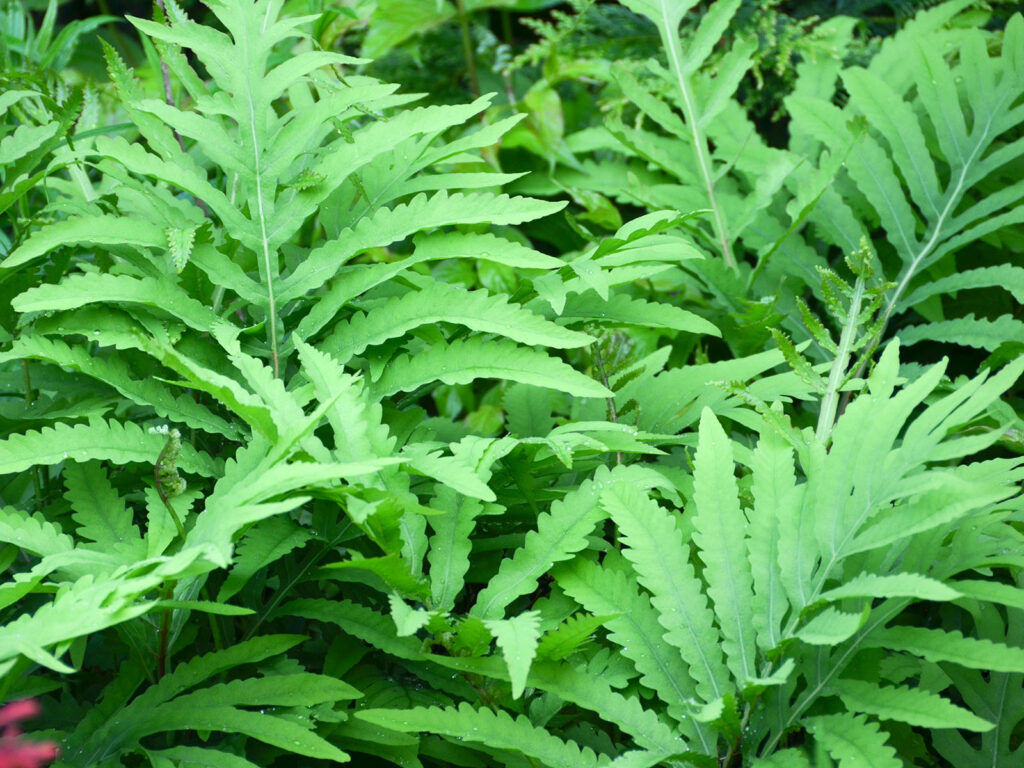
Sensitive fern is easy to grow to say the least. I have to be sure it doesn’t get out of bounds, though it’s not hard to contain.
It has a very fresh, clean look to it.
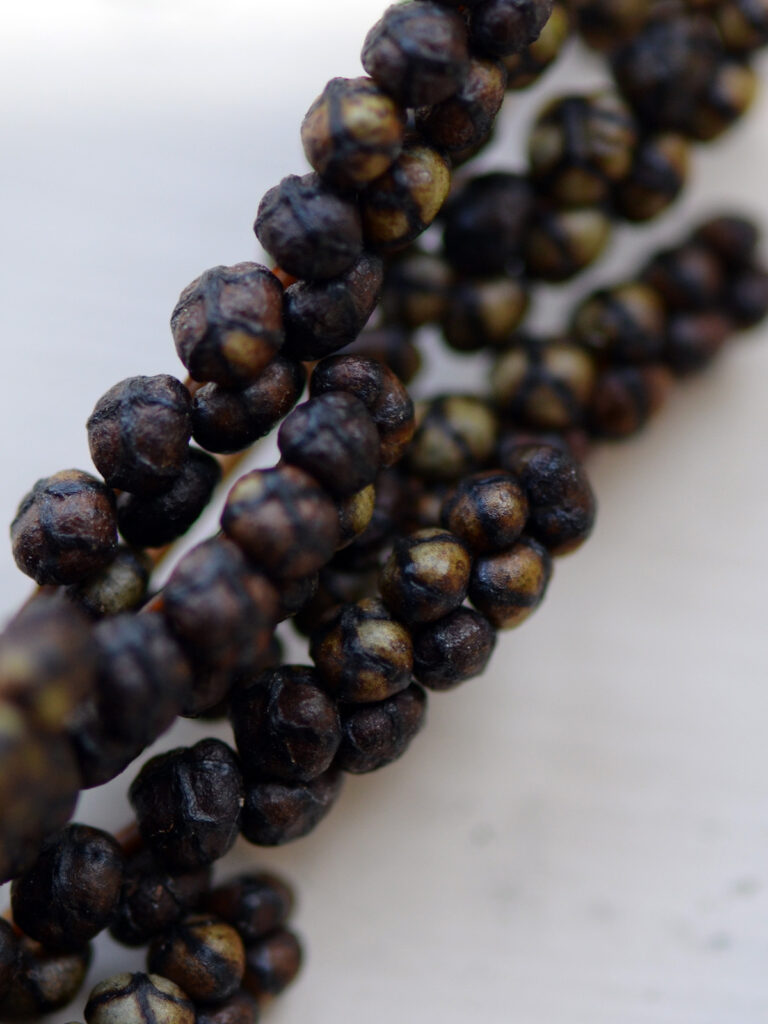
The sensitive fern has a separate structure for its sori.
Wildlife: Shelters salamanders and frogs
- Learn more:
- Wildflower Center: Sensitive fern
New York fern (Thelypteris noveboracensis)
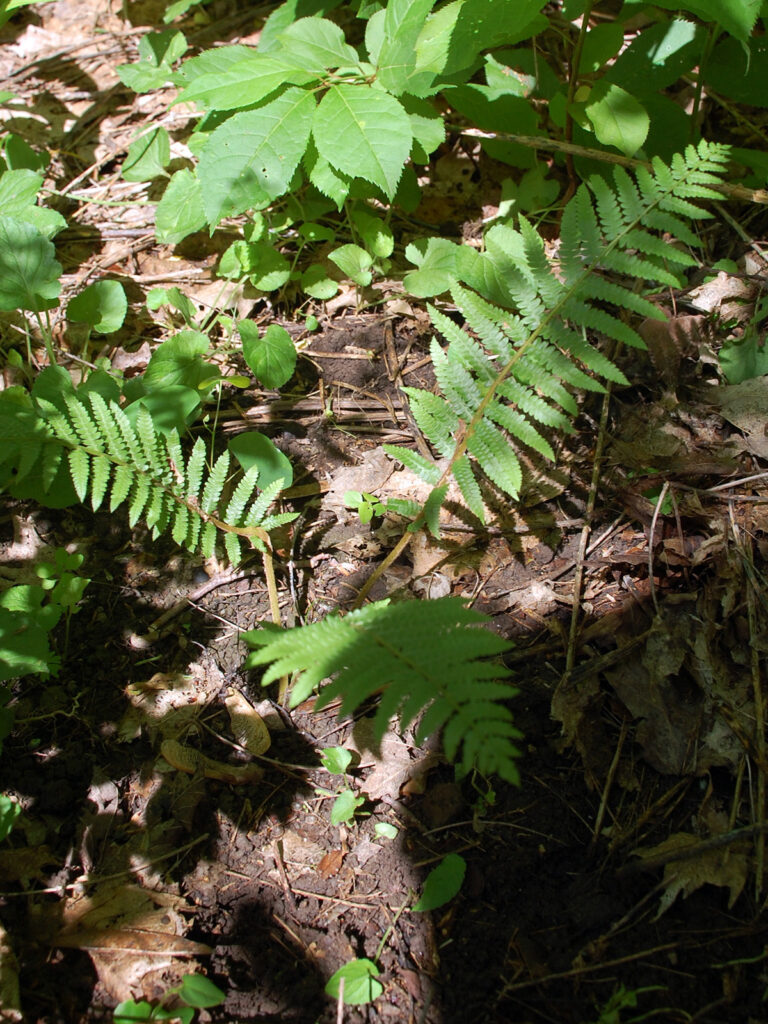
I’m pretty sure this is New York fern. I know I planted some, but foolishly didn’t stick a plant marker next to it.
I’m guessing it’s New York fern because each frond tapers at the top and at the bottom and as they say, New Yorkers burn the candle at both ends. (This isn’t the Upstate New York lifestyle fortunately.)
Wildlife: Provides shelter for toads
- Learn more:
- Wildflower Center: New York fern
Christmas fern (Polystichum acrostichoides)
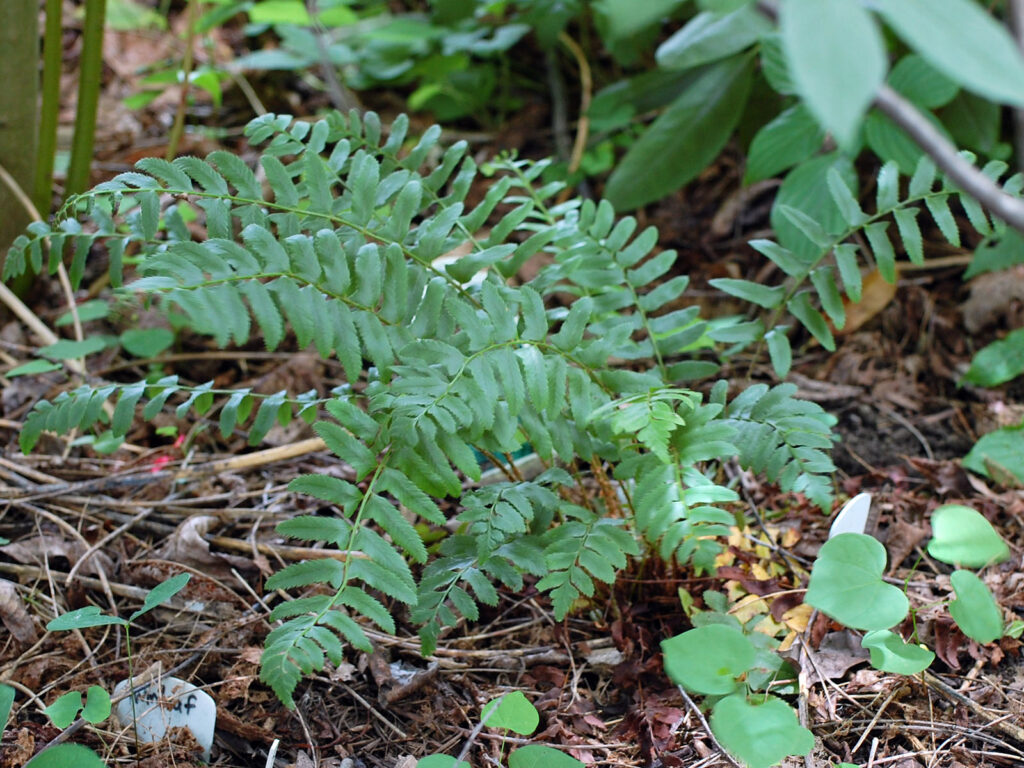
Christmas fern is named for the little heel of a Christmas stocking seen at the base of each “leaf” (pinnule). It has beautiful deep green foliage. This species is apparently easy to grow since I haven’t had the problems I’ve had with some of the other ferns.
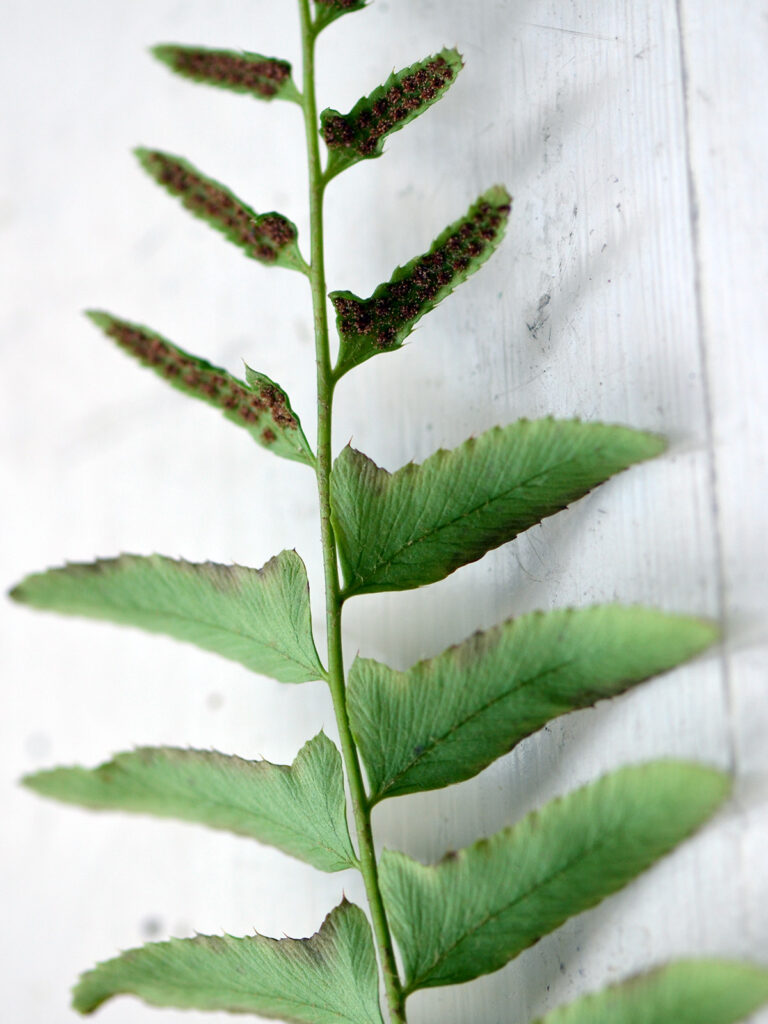
When I first was looking to see what the sori looked like, I looked at the bottom of the blade, but then I noticed the tip of the blade was different. That’s where it produces its sori.
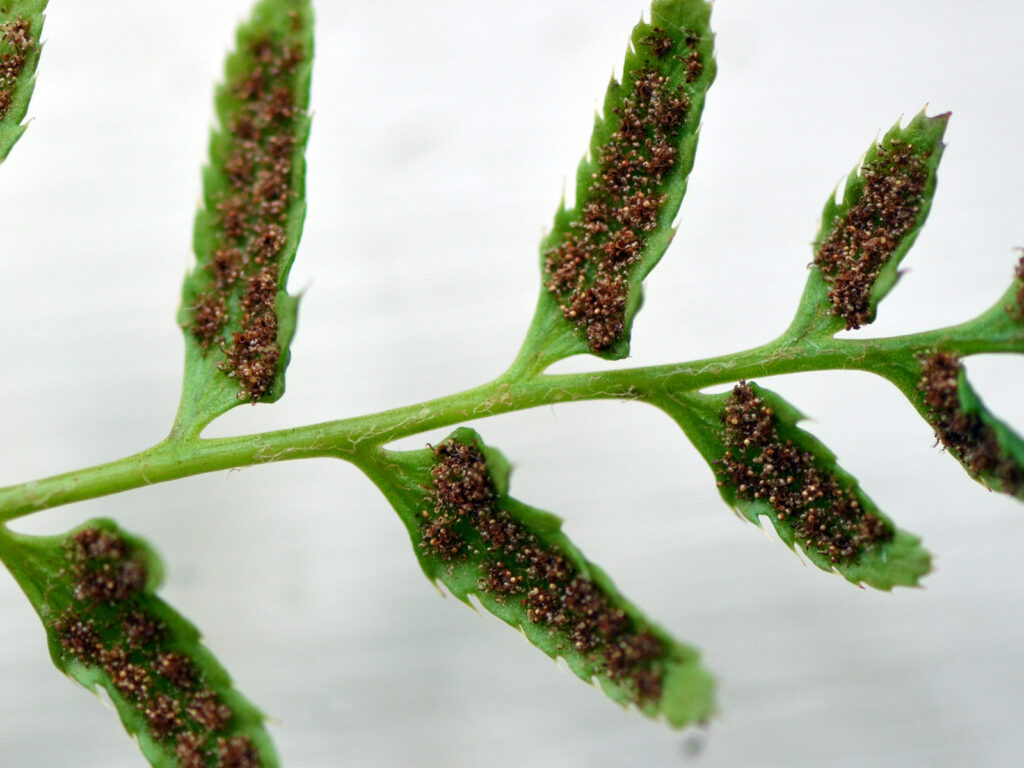
A closer view of the sori.
- Learn more:
- Wildflower Center: Christmas fern
Cinnamon fern (Osmunda cinnamomea)
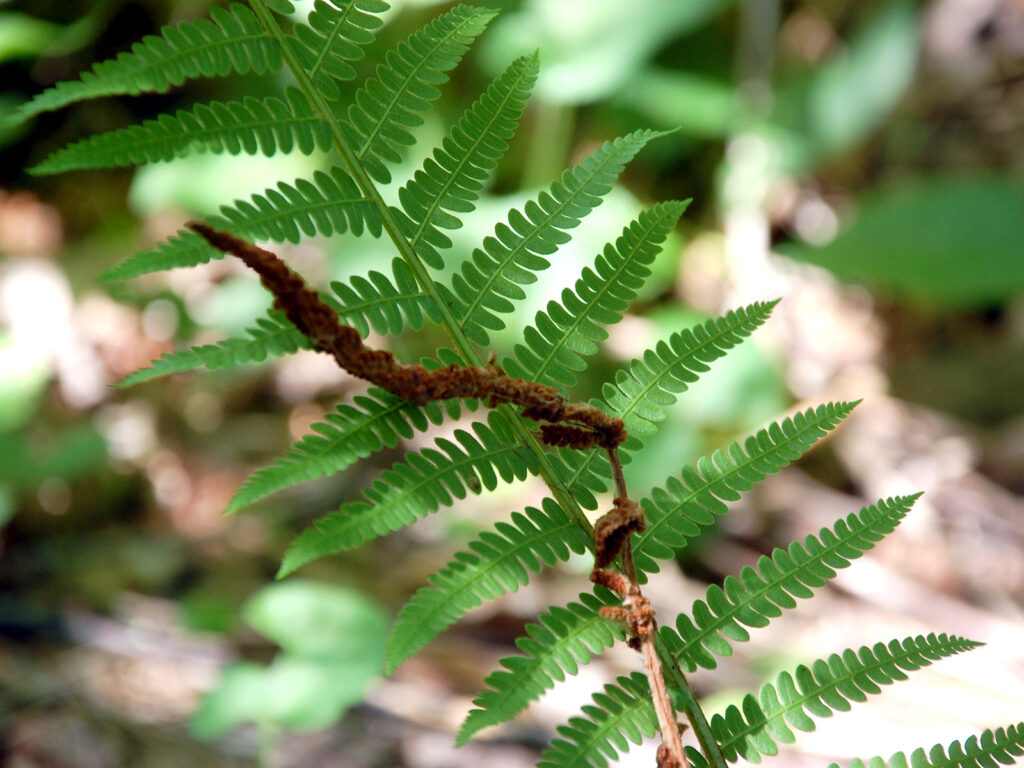
Cinnamon fern has a distinctive “cinnamon stick.” This is a very young one that I bought from our County Soil and Water Conservation District plant sale just a while before this photo.
Update: Two pieces of bad news.
1) I heard that the source of these plants isn’t sustainably managed, i.e. may have been harvested from the wild.
2) The plants didn’t survive. This isn’t surprising since it wasn’t in good condition when I got it. Now I feel especially bad since it was probably thriving in its original location.
Wildlife: Fuzz is a nesting material for birds
- Learn more:
- Wildflower Center: Cinnamon fern
Royal fern (Osmunda regalis var. spectabilis)
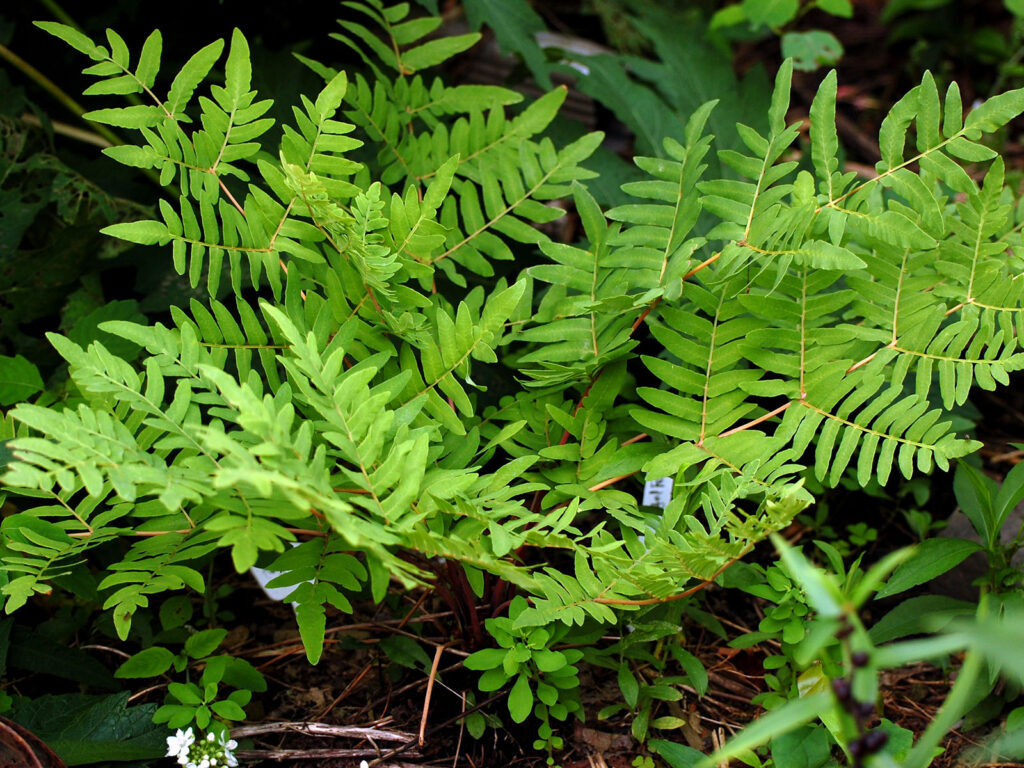
Our royal fern was nicely maturing for a while, though it is definitely slow-growing. As William Cullina says, it takes several seasons to mature. It was also right next to (i.e. being overrun by) a second giant glade mallow, which I reluctantly removed for the good of the fern.
UPDATE: It appears that the site is either just not wet enough, or it was too crowded by other plants. In any case, it finally died.
Maybe I’ll try another one when I get a chance.
- Learn more:
- Wildflower Center: Royal fern
